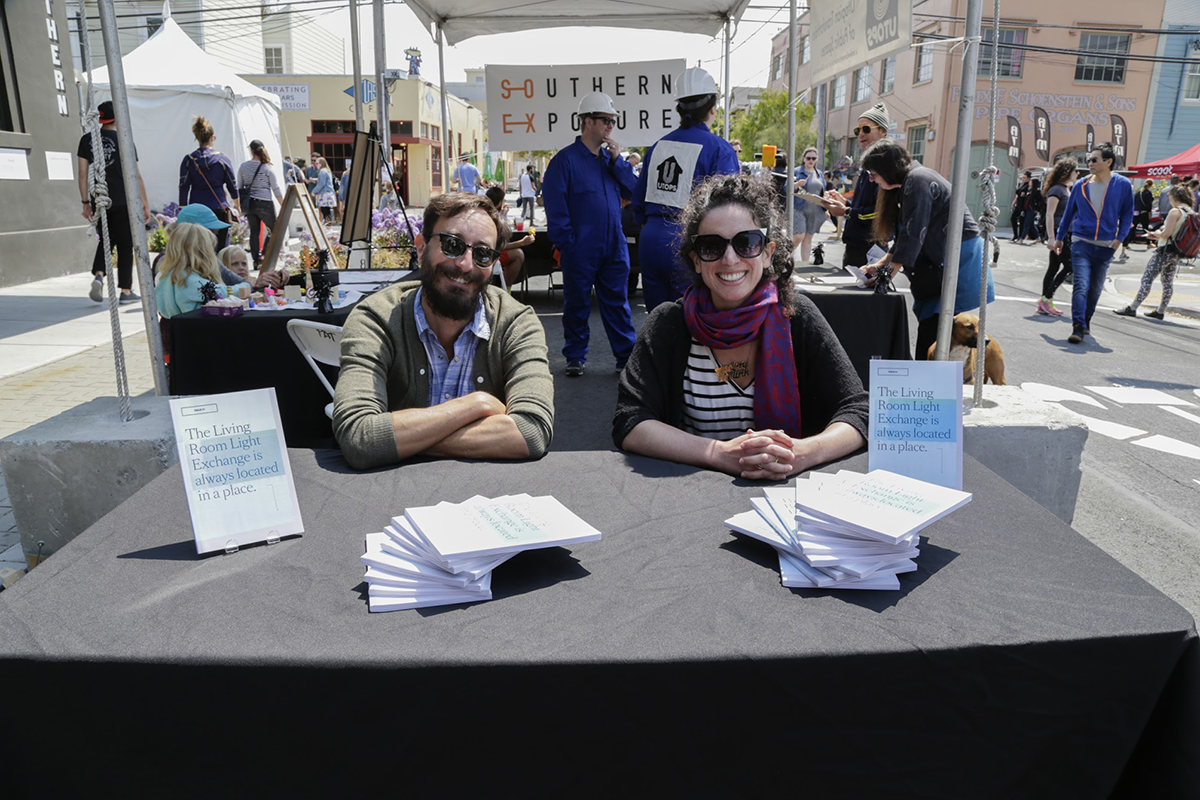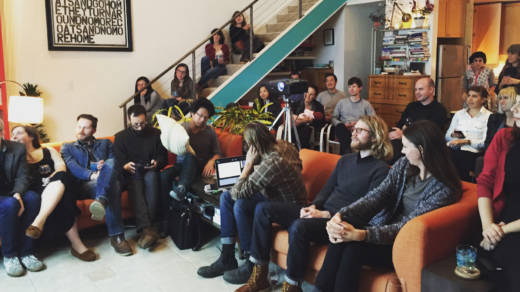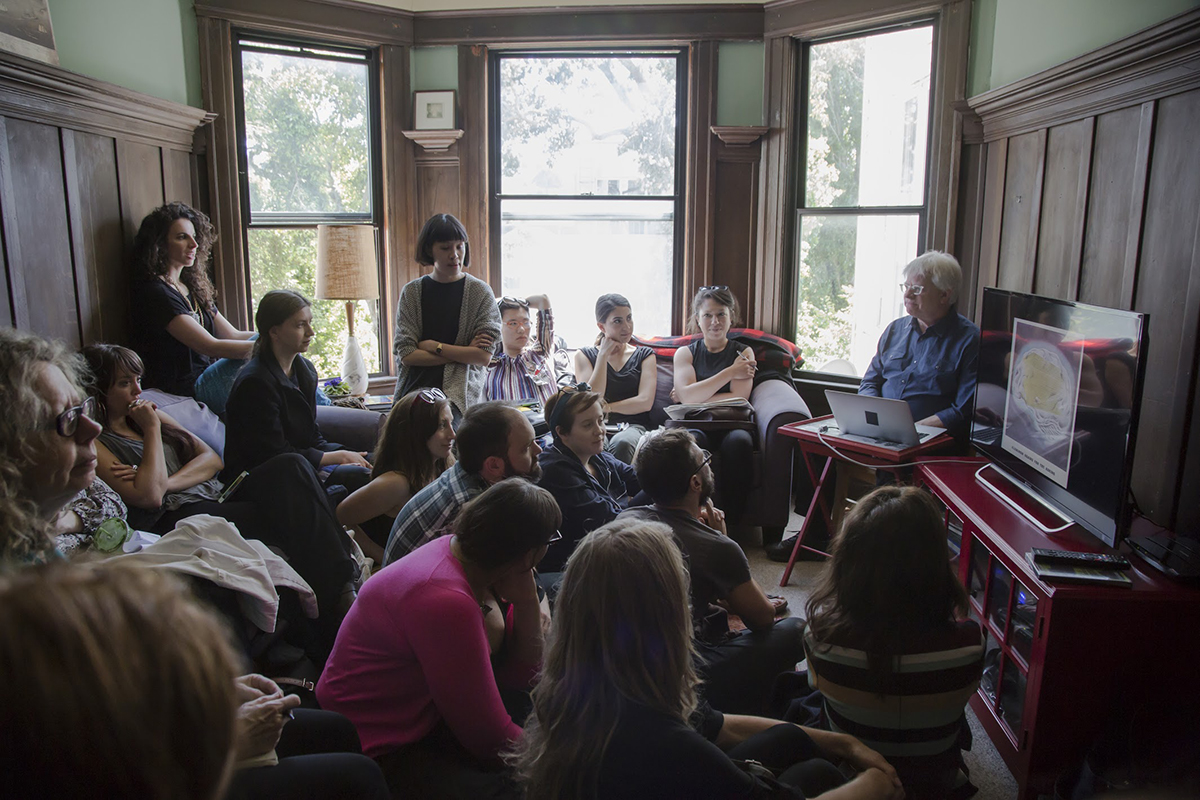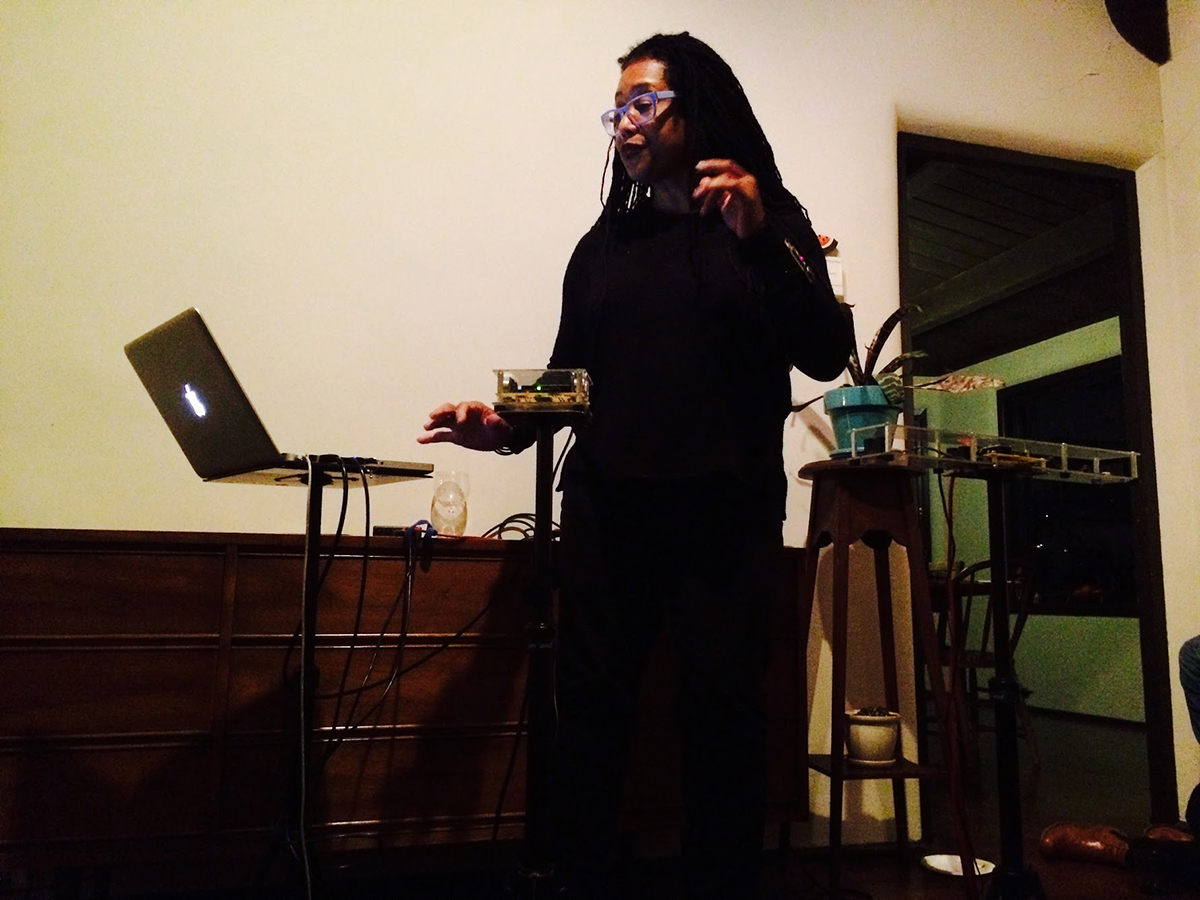When artist Liat Berdugo moved to the Bay Area after finishing her MFA at Rhode Island School of Design, she sought out a community engaged in her interests: arts and technology. She tried Meetup gatherings, but, she found, “It was a lot of dudes talking about how many projectors they could get mapped onto one sculpture.” Disappointed by the lack of critical discourse, in 2013 she co-founded Living Room Light Exchange (LRLE), a new media art salon, with fellow artist Elia Vargas.
Since then, on the third Tuesday of every month, the duo host presentations and discussions of new media art in the living rooms of Bay Area residents, mainly in Oakland and San Francisco. Past speakers range from the interactive installation artist and Stanford professor Camille Utterback and Internet Archive founder and entrepreneur Brewster Kahle to Kathleen Quillian and Gilbert Guerrero, curators behind Shapeshifters Cinema, an expanded cinema series held monthly at the Temescal Art Center.

The format of a LRLE doesn’t vary: three speakers, each allotted 15 minutes, present on their work, with time reserved for questions and further conversation at the end at the night. Over the years, the event has grown its audience size and inspired offshoots in Tel Aviv, Paris, and New York.
Berdugo, a new media artist and assistant professor in the University of San Francisco’s design program explains, “We were interested in what can tech do when it meets with art that is more renegade.” She wanted a broader curatorial perspective beyond what she called at a recent Exchange, “blinky-blink art.”
Vargas, a PhD student in film and digital media at UC Santa Cruz, noted the history of punk and DIY spaces in Oakland. “House shows have been going on in Oakland for over 30 years. There’s a rich tradition of that here. I wondered why that doesn’t carry over into the domain of new media art?”





